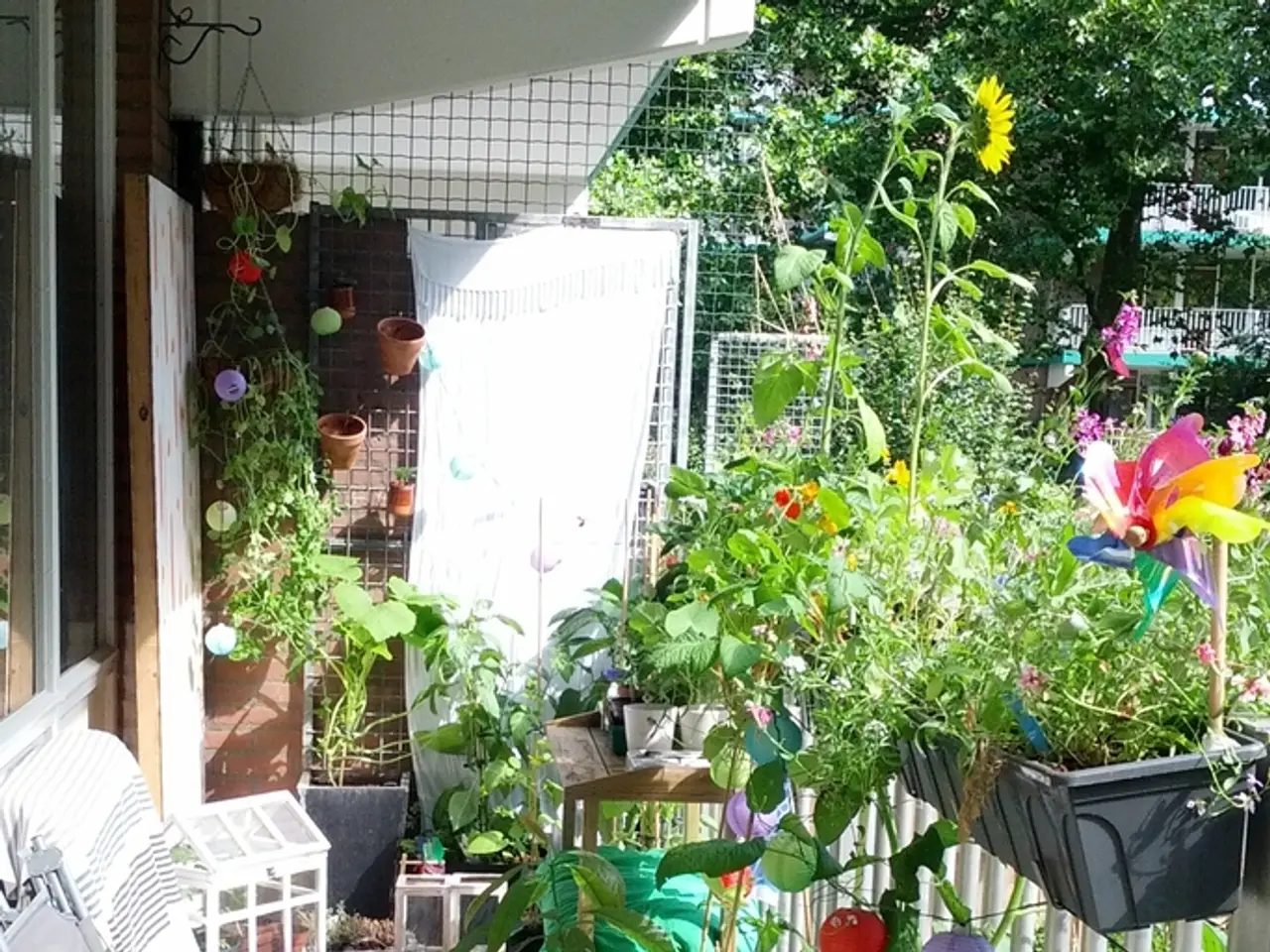City-focused Permaculture: Fortifying Urban Landscapes for Durability
Urban permaculture, a design approach that aims to create sustainable living spaces in cities by copying nature's good relationships, is transforming cities worldwide. Initiatives in cities like Havana, Seattle, and Melbourne are leading the way, demonstrating the potential of urban permaculture to promote resilience and sustainability in cities.
One key aspect of urban permaculture is rainwater harvesting. This method, used for collecting and storing rainwater for irrigation and other uses, reduces the strain on municipal water supplies and lowers energy and infrastructure costs. Rainwater harvesting and grey-water systems, which repurpose water from sinks, showers, and washing machines for landscaping and other applications, are new ways to save water in urban permaculture, helping cities use less from their supply.
Urban farming, a significant part of urban permaculture, also has environmental benefits. By replacing food that's shipped in, urban farming cuts down on emissions, reducing transport emissions. Urban permaculture helps cities deal with climate change by producing food within city limits, ensuring a consistent and reliable food supply even in times of crisis or emergencies.
Urban permaculture strategies include implementing water harvesting systems, designing closed-loop systems, and creating diverse, multi-layered plantings. These strategies address challenges like urban heat islands, pollution, resource depletion, and waste generation.
Community engagement is another crucial aspect of urban permaculture. Shared urban farms and eco-projects build resilience, strengthen social bonds, and improve neighborhoods. Urban permaculture creates sustainable jobs in farming, energy, and design, helping local economies grow.
Successful urban permaculture initiatives around the world demonstrate diverse approaches integrating food production, sustainability, and community engagement. For example, Cape Town, South Africa, hosts over 160 urban farming sites supporting around 1,000 urban farmers. These projects enhance self-sufficiency, biodiversity, and climate resilience.
Mumbai and Bengaluru, India, feature projects led by organizations like Earth5R, which train residents to grow organic vegetables on rooftops, balconies, and community spaces using composted household waste. City policies supporting rooftop farming and urban agriculture integration are key to scaling these efforts.
Singapore advances urban permaculture via vertical farms supported by the government’s “30 by 30” food strategy to produce 30% of the nation’s food by 2030. These high-tech farms use controlled environments to optimize yield with minimal water, reducing import dependence and stabilizing prices.
Community gardens and food forests in U.S. cities embody permaculture principles by involving local residents in managing shared garden spaces. These projects extend the model by creating layered, self-sustaining ecosystems.
Innovations across cities include rooftop farms, vertical farms, and modular greenhouses in unconventional urban spaces like parking lots and rail corridors. These setups promote circular economies by converting organic waste to compost, reusing greywater, and providing green cooling benefits to buildings.
These examples highlight that successful urban permaculture combines sustainable food production, community empowerment, education, climate adaptation, and smart urban planning, fostering resilient and self-sufficient cities worldwide. Investing in urban ecosystems and green spaces improves community life, health, and well-being, and is important for climate resilience and sustainability. Urban permaculture, with its focus on permanent agriculture and permanent culture, offers a promising solution to many of the challenges faced by cities today.
References: 1. Urban Agriculture: A Review of the State of the Field 2. Oranjezicht City Farm 3. Earth5R 4. Community Gardens and Food Forests
- Urban permaculture, which replicates nature's relationships for sustainable living spaces in cities, emphasizes rainwater harvesting to conserve water and alleviate strain on city supplies.
- Urban farming, an essential part of urban permaculture, decreases emissions by replacing transported food, making cities more resilient against climate change.
- In urban permaculture, water harvesting systems, closed-loop designs, and companion planting contribute to addressing urban challenges like heat islands, pollution, and resource depletion.
- Community gardens and shared urban farms are vital in urban permaculture, fostering resilience, improving neighborhoods, and creating sustainable jobs in various sectors.
- successful urban permaculture initiatives worldwide, like the over 160 urban farming sites in Cape Town, promote self-sufficiency, biodiversity, and climate resilience.
- Cities in India, such as Mumbai and Bengaluru, promote urban permaculture through rooftop farming projects, teaching residents to grow organic vegetables using composted waste and reducing import dependence.
- Singapore's "30 by 30" food strategy supports vertical farms that optimize yield using minimal water and aim to produce 30% of the nation's food by 2030, reducing import dependency and stabilizing prices.




